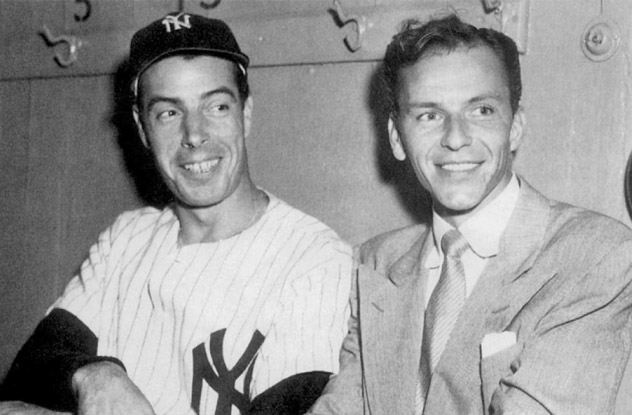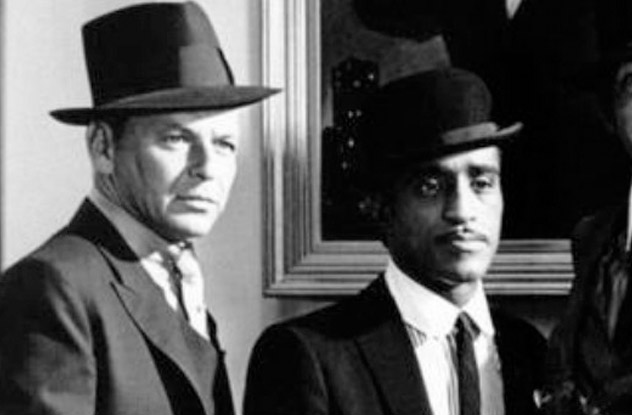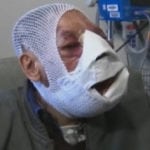 Politics
Politics  Politics
Politics  Humans
Humans The 20th Century’s 10 Most Famous Centenarians
 History
History 10 Influencers Who Lived Centuries before Social Media
 Miscellaneous
Miscellaneous 10 Ancient Etiquette Rules You Never Knew Existed
 Our World
Our World Planet Earth’s 10 Most Hardcore Natural Creations
 Movies and TV
Movies and TV 10 Times Twin Movies Competed with Each Other
 The Arts
The Arts 10 Masterpieces Plucked from the Artist’s Subconscious
 Crime
Crime 10 Fascinating Facts about Rikers Island
 Pop Culture
Pop Culture 10 Things You Might Not Know about Dracula
 Weird Stuff
Weird Stuff 10 Everyday Activities That Were Once Considered Illegal
 Politics
Politics 10 U.S. Presidents Who Cheated on Their Wives
 Humans
Humans The 20th Century’s 10 Most Famous Centenarians
 History
History 10 Influencers Who Lived Centuries before Social Media
Who's Behind Listverse?

Jamie Frater
Head Editor
Jamie founded Listverse due to an insatiable desire to share fascinating, obscure, and bizarre facts. He has been a guest speaker on numerous national radio and television stations and is a five time published author.
More About Us Miscellaneous
Miscellaneous 10 Ancient Etiquette Rules You Never Knew Existed
 Our World
Our World Planet Earth’s 10 Most Hardcore Natural Creations
 Movies and TV
Movies and TV 10 Times Twin Movies Competed with Each Other
 The Arts
The Arts 10 Masterpieces Plucked from the Artist’s Subconscious
 Crime
Crime 10 Fascinating Facts about Rikers Island
 Pop Culture
Pop Culture 10 Things You Might Not Know about Dracula
 Weird Stuff
Weird Stuff 10 Everyday Activities That Were Once Considered Illegal
10 Strange Stories About Frank Sinatra
In an era of dime-a-dozen singers, Frank Sinatra stood out from the rest with his soulful voice and tough guy persona. During his 60-year career, this kid from New Jersey went from bobby-soxer idol to successful actor to Chairman of the Board. He dated movie stars, hung out with a president, and knew how to rock a fedora. As a man famous for doing things his way, Sinatra lived quite the exciting life, full of crazy facts and strange stories.
10 Arrested For Seduction And Adultery

Frank Sinatra’s brief stint in lockup was thanks to his womanizing ways. On November 25, 1938, the crooner was dragged into jail on the charge of seduction, evidently a serious deal back in the ’30s. Sinatra was caught sleeping with an upstanding single woman, a pillar in the community until she was corrupted by Frankie’s wicked ways.
The charge was eventually dismissed, and Sinatra was let go until December 22 when he was hauled back to the slammer. After doing a little detective work, authorities discovered Sinatra’s lady friend was married, and Frank was charged with adultery. Eventually, officials dropped the case, and after a combined total of 16 hours in jail, Sinatra was back on the prowl.
Get the Frank Sinatra mugshot in vibrant living…erm, black and white. Buy the Frank Sinatra (Mug Shot) Music Poster Print at Amazon.com!
9 He Could’ve Been King Of The Action Genre
When Frank Sinatra wasn’t cutting records, he was busy acting in dramas like From Here to Eternity and The Man with the Golden Arm. But if things had worked out differently, we might be mentioning Ol’ Blue Eyes alongside Arnold Schwarzenegger and Sylvester Stallone.
Frank’s potential action career started with The Manchurian Candidate, a thriller featuring an all-out martial arts battle between Sinatra and actor Henry Silva. The scene is significant because it’s the first karate fight in American cinema. (Spencer Tracy used karate in Bad Day at Black Rock, but his opponent didn’t know martial arts, so it wasn’t technically a karate fight.)
However, The Manchurian Candidate also kept Sinatra from becoming one of the biggest heroes of all time. During the fight scene, his character throws a karate chop and strikes his hand on a wooden table. Sinatra hit the table so hard that he broke his little finger. The injury bothered him for the rest of his life, and it even kept him from starring in Dirty Harry. Warner Brothers originally wanted Swoonatra to play Clint Eastwood’s iconic role, but his injured hand prevented him from wielding Harry Callahan’s .44 Magnum.
Still, Sinatra had one last chance at action movie greatness. The 1988 hit Die Hard was based on the novel Nothing Lasts Forever by Roderick Thorp. The book focused on older cop named Joe Leland, and Sinatra had actually played Leland in a 1966 movie called The Detective. When 20th Century Fox decided to make Die Hard, they first had to ask Sinatra if he wanted to play the wisecracking John McClane. Fortunately for movie fans and Bruce Willis, Sinatra said no.
8 The Man Behind Scooby-Doo

After making his grand appearance in 1969, Scooby-Doo quickly became one of the most popular cartoon characters of all time, spawning numerous TV shows, films, and merchandise galore. And it’s all thanks to Frank Sinatra.
The Great Dane was almost a mere supporting character in a show titled Mysteries Five. The premise involved five teenage rockers who traveled around playing music and solving mysteries. As for the Scooby character, his name was “Too Much,” he played the bongos, and he never went anywhere without his cap and sunglasses. However, the folks at CBS weren’t too thrilled. After looking over the artwork, they decided the show was just too scary for kids. Things were looking grim for the Hanna-Barbera cartoon, and that’s when Sinatra saved the day.
While flying to Los Angeles, CBS children’s programming head Fred Silverman was listening to a recording of Sinatra’s “Strangers in the Night.” Near the end of the song, Sinatra starts improvising, singing nonsense phrases like “dooby-dooby-doo.” And that’s when everything clicked. Silverman suddenly realized the dog’s name was Scooby-Doo, and he was going to be the star of the show. Silverman then hustled back to CBS headquarters and sold the studio his new idea.
7 Frank Sinatra vs. Marlon Brando

While Frank Sinatra had quite a few high-profile friends, the one guy he never liked was Marlon Brando. In fact, the two actors hated each other’s guts.
Their rivalry started while filming Guys and Dolls, a 1955 musical directed by Joseph L. Mankiewicz. Things started off badly when Sinatra showed up already holding a grudge, claiming he should have landed the part of Terry Malloy in On the Waterfront, a role that won Brando an Oscar. Making matters worse, he was jealous that Brando was cast as the romantic lead in Guys and Dolls while he was relegated to comic relief.
Infuriated, Sinatra decided to be a class-A jerk for the rest of the production. So when Brando asked for help in the singing department, Sinatra gave him the cold shoulder, saying he wasn’t into “that method crap,” referring to Brando’s acting style. When talking about Brando, Sinatra dubbed him “Mumbles” and told people he was the “world’s most overrated actor.” And instead of playing the funny guy, Sinatra always tried to outshine Brando, going into full crooner mode when it was his turn to sing.
Brando didn’t exactly turn the other cheek. Notoriously difficult to work with at the best of times, Marlon went to the mattresses. Since Sinatra hated doing retakes, Brando intentionally screwed up shots. During a scene where Sinatra ate a piece of cheesecake, Brando repeatedly “forgot” his lines, forcing Sinatra to eat a new wedge of dessert with every retake. Nine takes and nine whole slices of cake later, a nauseous Sinatra lost his temper, tossed his plate, stabbed his fork into the table, and shouted, “How much cheesecake do you think I can eat?”
6 The Kennedys’ Mafia Liaison

Frank Sinatra’s ties to the Mafia were perhaps the worst kept secret in music history. Despite his constant denials, everybody knows the Sultan of Swoon of was chummy with the biggest names in the underworld. Frankie showed up in photos alongside Carlos Gambino, and he allegedly introduced JFK and Sam Giancana to the same woman. He’s even the inspiration for Johnny Fontaine, the fictional crooner in The Godfather.
But was Sinatra actually a gangster? Or did he just like hanging out with tough guys? Either way, he was allegedly involved in some pretty shady dealings, some of which involved the most powerful men in the country. Take for example the time he allegedly played middleman for the Kennedys and the Chicago Outfit.
It was 1960, John F. Kennedy was running in the Democratic presidential primary in West Virginia, and his dad wanted to buy him a few votes. Joseph Kennedy figured Sam Giancana was a man who could pull some strings but knew things would backfire if he was caught talking to a mobster. So instead, he supposedly turned to Sinatra.
At the time, Frank and JFK were pretty good friends, so Sinatra agreed to act as liaison to the mob. He allegedly put in a good word to Giancana, and the gangster came through with the votes. But when the Kennedys took over the White House, Attorney General Robert Kennedy cracked down hard on the mob, convicting a grand total of 288 mobsters in 1963 alone.
Giancana wasn’t happy, but since he couldn’t put a horse head in Kennedy’s bed, he decided to punish Sinatra, though not too severely. According to Sinatra’s own daughter, Frank’s penance was to perform two shows a night for eight nights straight at Giancana’s club, the Villa Venice.
5 The FBI’s Weird Sinatra File

It probably won’t come as a surprise that J. Edgar Hoover opened an FBI file on Frank Sinatra. After all, he was everything Hoover hated. He was a pop singer corrupting America’s youth, and he championed civil rights. However, Sinatra’s file was declassified after the singer’s death in 1998, there was surprisingly little to show. Sure, it was six inches thick and around 1,300 pages long, but despite their numerous investigations, there was very little the FBI could pin on the guy.
If you were to peruse all the memos, you’d find the expected investigations into his associations and health records. You’d even stumble across a memo claiming Sinatra volunteered to be an FBI informant. However, the really weird part about Sinatra’s file was the reason it was started in the first place.
In a letter dated August 13, 1943, an anonymous tipster warned J. Edgar Hoover about Sinatra’s subversive voice. “The other day,” the letter starts, “I turned on a Frank Sinatra program, and I noted the shrill whistling sound, created supposedly by girls cheering.” Recognizing those frantic screams of devotion, the paranoid letter writer claimed, “How easy it would be for certain-minded manufacturers to create another Hitler here in America through the influence of mass-hysteria!”
Ever vigilant, J. Edgar Hoover agreed with this assessment and opened a 40-year investigation into the man with a passionate fan base.
Can’t get enough Sinatra? Buy the Frank Sinatra Film Collection at Amazon.com!
4 The Kidnapping Of Frank Sinatra Jr
.

Frank Sinatra Jr. wanted to be like his dad. In pursuit of a singing career, the 19-year-old was performing at venues across the country when he ended up at Harrah’s Lodge in Stateline, Nevada. It was December 8, 1963, and Frankie Jr. was in his hotel bedroom when someone knocked on his door. Frank opened up to find two delivery boys. But instead of dropping off a package, they threw Junior into the trunk of their car and took off down the road.
The kidnappers were Barry Keenan and Joseph Amsler. Originally, they’d planned on snatching Bob Hope’s or Bing Crosby’s sons, but in the end, they settled on Sinatra Jr., figuring he was made of tougher stuff and wouldn’t panic. Keenan and Amsler weren’t the brightest criminals in the world though and forgot to bring money for gas. They ended up borrowing a few bucks from their victim, and after fueling up, they sped toward Los Angeles.
Word of the kidnapping spread quickly, and both Robert Kennedy and Sam Giancana offered Sinatra Sr. their services. Instead, Frank went with the FBI. Holed up in a Reno hotel, Sinatra got a phone call from a third kidnapper named John Irwin. Desperate to save his son, Sinatra offered $1 million, but these crooks weren’t greedy. All they wanted was $240,000, thanks.
Following instructions, Sinatra and an FBI agent made the drop, and a few hours later, the punks released Frank Jr. near Bel Air. A few days later, John Irwin grew a conscience, turned himself in, and ratted out his crew. The kidnappers were rounded up and received extremely harsh sentences, but they were eventually released as they seemed flat-out crazy.
As for Sinatra, he bought pricey gold watches for all the FBI agents who helped rescue his son. When they said they couldn’t accept his gifts, Sinatra bought one for Hoover as well. All complaints ceased.
3 Sinatra and DiMaggio’s Wrong Door Raid

Frank Sinatra was quite the Don Juan in his day, wooing some of Hollywood’s most desirable women. But while he married women like Ava Gardner and Mia Farrow, his most legendary partner was no doubt Marilyn Monroe. Their relationship took a few weird turns along the way. The couple started dating after Monroe broke up with playwright Arthur Miller, and Sinatra introduced the Blonde Bombshell to John F. Kennedy. But the strangest moment of their odd friendship was the infamous Wrong Door Raid, a bizarre scandal that involved baseball legend Joe DiMaggio.
It was 1954, and while DiMaggio and Monroe were married, their relationship was going sour. One night in November, Joltin’ Joe and Sinatra were dining in a Hollywood restaurant when the center fielder got a phone call. A private eye had tailed Monroe to an apartment building and suspected she was with another guy. Infuriated, DiMaggio and Sinatra bolted out of the restaurant, neglecting to pay the check. It wasn’t really that big a deal though as the maitre d’ went along with them, desperately wanting in on the action.
The crazy bunch stormed into the apartment complex and kicked down the door. Armed with a camera, the posse rushed the bed, intent on catching Marilyn in the act. When they turned on the lights, they found a terrified woman named Florence Kotz. They’d broken into the wrong room.
Horrified, the group scattered. Marilyn was in a different apartment visiting a female friend.
Ms. Kotz sued the group and won $7,500. And as for DiMaggio, he eventually divorced Monroe and grew bitter toward Sinatra, blaming Frank and the Kennedys for Marilyn’s death. Near the end of his life, the Yankee forbade anyone from speaking Sinatra’s name in his presence.
2 A Civil Rights Champion

Nine years before the Supreme Court ruled on Brown v Board of Education, Froebel High School in Gary, Indiana accepted 200 African-American students. Not all of the white kids were happy. A thousand angry teens banded together and protested the school’s decision by skipping school. And that’s when Frank Sinatra showed up.
Earlier that year, Sinatra had starred in an Academy-Award winning short called The House I Live In. The movie featured Sinatra lecturing a group of boys on how all Americans are equal, regardless of race or religion. With the film fresh in his mind, Sinatra flew out to Froebel High School and spoke to the entire student body, explaining the evils of racism. Before he left, Sinatra had the students take a pledge of tolerance and even sang the theme to “The House I Live In,” a ballad with lyrics like: “The children in the playground / The faces that I see / All races and religions / That’s America to me.”
This wasn’t the first or last time Sinatra stuck up for civil rights. In an age of rampant racism, Sinatra gladly performed with singers like Billie Holliday, Ella Fitzgerald, and Nat King Cole. Sinatra never performed at venues were blacks weren’t allowed, and he wouldn’t stay at hotels unless his black friends could stay there too. On one occasion, Sinatra brought singer Lena Horne into an all-white club, and later, he performed at a Martin Luther King Jr. benefit.
While it’s true that Sinatra made racist jokes on stage at Sammy Davis Junior’s expense, Frank was by and large a champion of equality in an age where most performers were too scared to challenge the status quo. “As long as most white men think of a Negro first and a man second,” Sinatra once said, “we’re in trouble. I don’t know why we can’t grow up.”
1 He Hated “My Way”
Without a doubt, “My Way” is Frank Sinatra’s most iconic song. As we’ve already learned, the pop classic was originally penned by French songwriter Jacques Revaus and was later retooled by Paul Anka for Frank Sinatra’s planned retirement in 1969. Sinatra couldn’t stay away from the mic for long, eventually returning to the stage for 25 more years.
But when Sinatra came back, he discovered everyone wanted to hear “My Way.” It’d become his trademark number, and audiences wouldn’t let him end a show without singing about how he’d lived his life without regrets The song became a part of music history, and soon everyone was singing it, not just Sinatra. “My Way” has been covered by everyone from Sid Vicious to the Three Tenors to Gonzo the Great. In 2005, it was played at more British funerals than any other pop song, and in the Philippines, karaoke fans take it so seriously that bad performances often end in murder.
The funny thing about all of this is that Sinatra absolutely hated “My Way.” And whenever he performed live, he told audiences exactly what he thought about it. During a gig at Caesars Palace, he told the crowd, “I hate this song—you sing it for eight years, you would hate it too.” When he performed at the Los Angeles Amphitheater, he snarked, “And of course, the time comes now for the torturous moment—not for you, but for me.” And he saved his best line for the folks at Carnegie Hall, telling them “My Way” was written by an 18-year-old Frenchman named Jacques Strappe.
Undoubtedly, Sinatra was irritated after singing it at every single performance, but some claim his “My Way” malice ran deeper than just aggravation. While Sinatra seemed bigger than life, many of his close friends claimed Ol’ Blue Eyes was actually pretty humble. He wasn’t the kind of guy who liked crooning about his own greatness in front of sold-out crowds. He’d rather sing love songs about others, not love songs about himself. But the fans wanted “My Way” so he gave it to them without fail.
In Nolan Moore’s personal opinion, the best cover of “My Way” is without a doubt the heavy metal version by Christopher Lee. Yes, that Christopher Lee. If you want, you can follow/friend Nolan on Facebook or send him an email.








